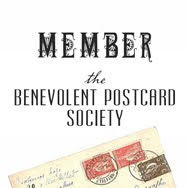 Today I came across the term PICA and low and behold…the International Classification of Diseases includes geophagia among eating disorders as a variety of pica, the ingestion of non-foods. I have known about geophagia for a long time, but had never heard of Pica. SSOOOO interesting. My grandfather confessed to being a “junior geophagist” he could still recall in his 90’s the delicious and distinct flavor of the dirt in his pantry growing up. (I always mention that perhaps mollasses had spilled in that spot and made it yummy). I don’t think I would like the texture of dirt, I think I could only enjoy the smoothest, silkiest of clays.
Today I came across the term PICA and low and behold…the International Classification of Diseases includes geophagia among eating disorders as a variety of pica, the ingestion of non-foods. I have known about geophagia for a long time, but had never heard of Pica. SSOOOO interesting. My grandfather confessed to being a “junior geophagist” he could still recall in his 90’s the delicious and distinct flavor of the dirt in his pantry growing up. (I always mention that perhaps mollasses had spilled in that spot and made it yummy). I don’t think I would like the texture of dirt, I think I could only enjoy the smoothest, silkiest of clays.  Pica (pronounced /ˈpaɪkə/ PY-kə) is a medical disorder characterized by an appetite for substances largely non-nutritive (e.g. metal, clay, coal, sand, dirt, soil, feces, chalk, pens and pencils, paper, batteries, spoons, toothbrushes, soap, mucus, ash, gum, etc.) or an abnormal appetite for food ingredients (e.g. flour, raw potato, raw rice, starch, ice cubes, salt). For these actions to be considered pica, they must persist for more than one month at an age where eating such objects is considered developmentally inappropriate. The condition's name comes from the Latin word for magpie, a bird that is reputed to eat almost anything. Pica is seen in all ages, particularly in pregnant women, small children, and those with developmental disabilities.
Pica (pronounced /ˈpaɪkə/ PY-kə) is a medical disorder characterized by an appetite for substances largely non-nutritive (e.g. metal, clay, coal, sand, dirt, soil, feces, chalk, pens and pencils, paper, batteries, spoons, toothbrushes, soap, mucus, ash, gum, etc.) or an abnormal appetite for food ingredients (e.g. flour, raw potato, raw rice, starch, ice cubes, salt). For these actions to be considered pica, they must persist for more than one month at an age where eating such objects is considered developmentally inappropriate. The condition's name comes from the Latin word for magpie, a bird that is reputed to eat almost anything. Pica is seen in all ages, particularly in pregnant women, small children, and those with developmental disabilities. Geophagy is the practice of eating earthy or soil-like substances such as clay, and chalk. It exists in animals in the wild and also in humans, most often in rural or preindustrial societies among children and pregnant women.
 In Haiti, the poorest economy in the Western Hemisphere, geophagy is widespread. The clay mud is worked into what looks like pancakes or cookies, called "bon bon de terres" (Earthy bon bons), that are dried in the sun and sold throughout the poorer areas. Small amounts of other ingredients, vegetable shortening, salt and sometimes sugar, are also added to the mix. The cookies have little or no nutritional value and are associated with various health problems, but they are eaten because they “fill the belly”.
In Haiti, the poorest economy in the Western Hemisphere, geophagy is widespread. The clay mud is worked into what looks like pancakes or cookies, called "bon bon de terres" (Earthy bon bons), that are dried in the sun and sold throughout the poorer areas. Small amounts of other ingredients, vegetable shortening, salt and sometimes sugar, are also added to the mix. The cookies have little or no nutritional value and are associated with various health problems, but they are eaten because they “fill the belly”. Do you want to eat some dirt? It was harder than I thought to find dirt for sale to eat. But here a site for clay…mmmhhh, is it smooth and silky? I might have to get me some.

